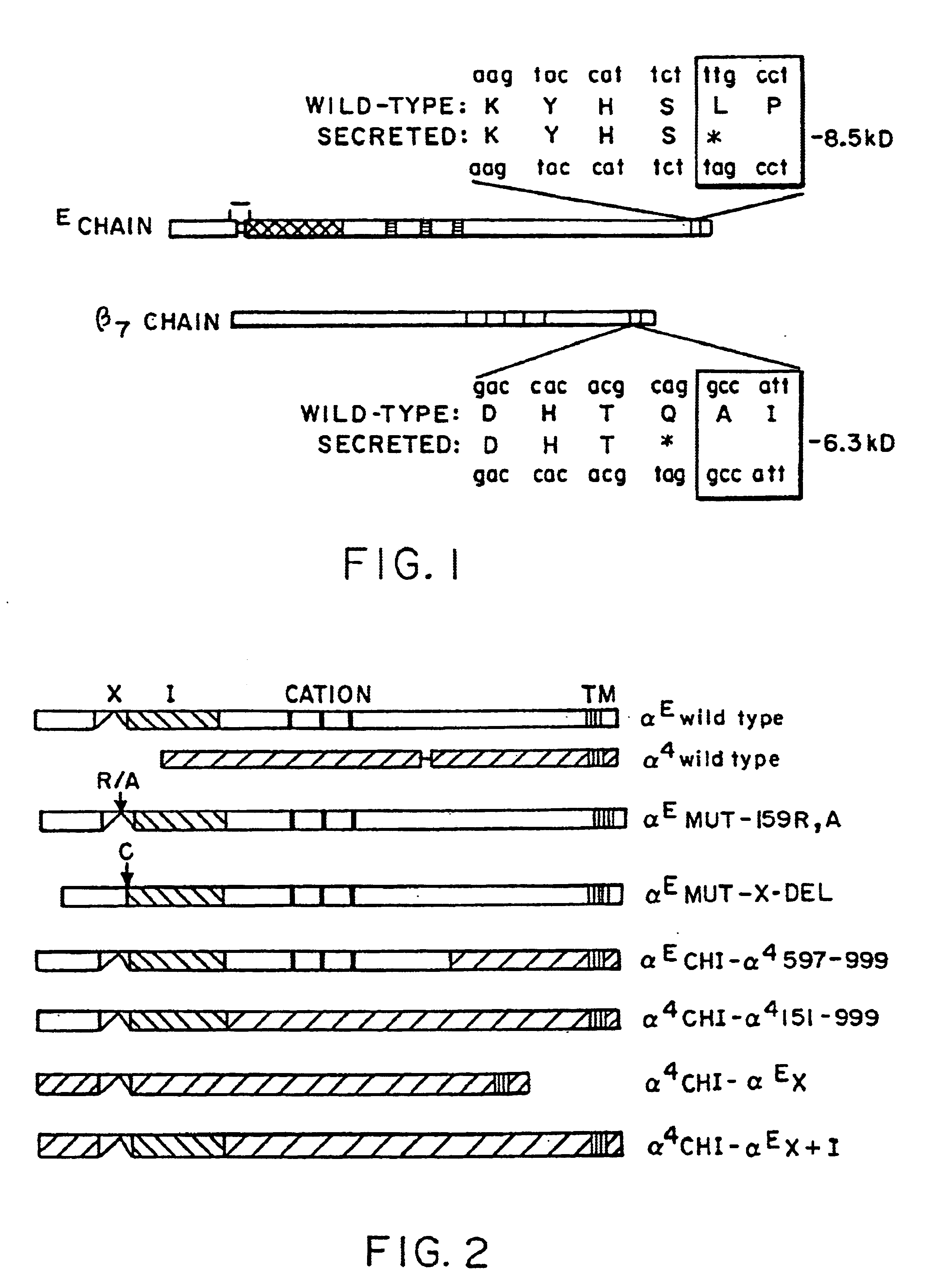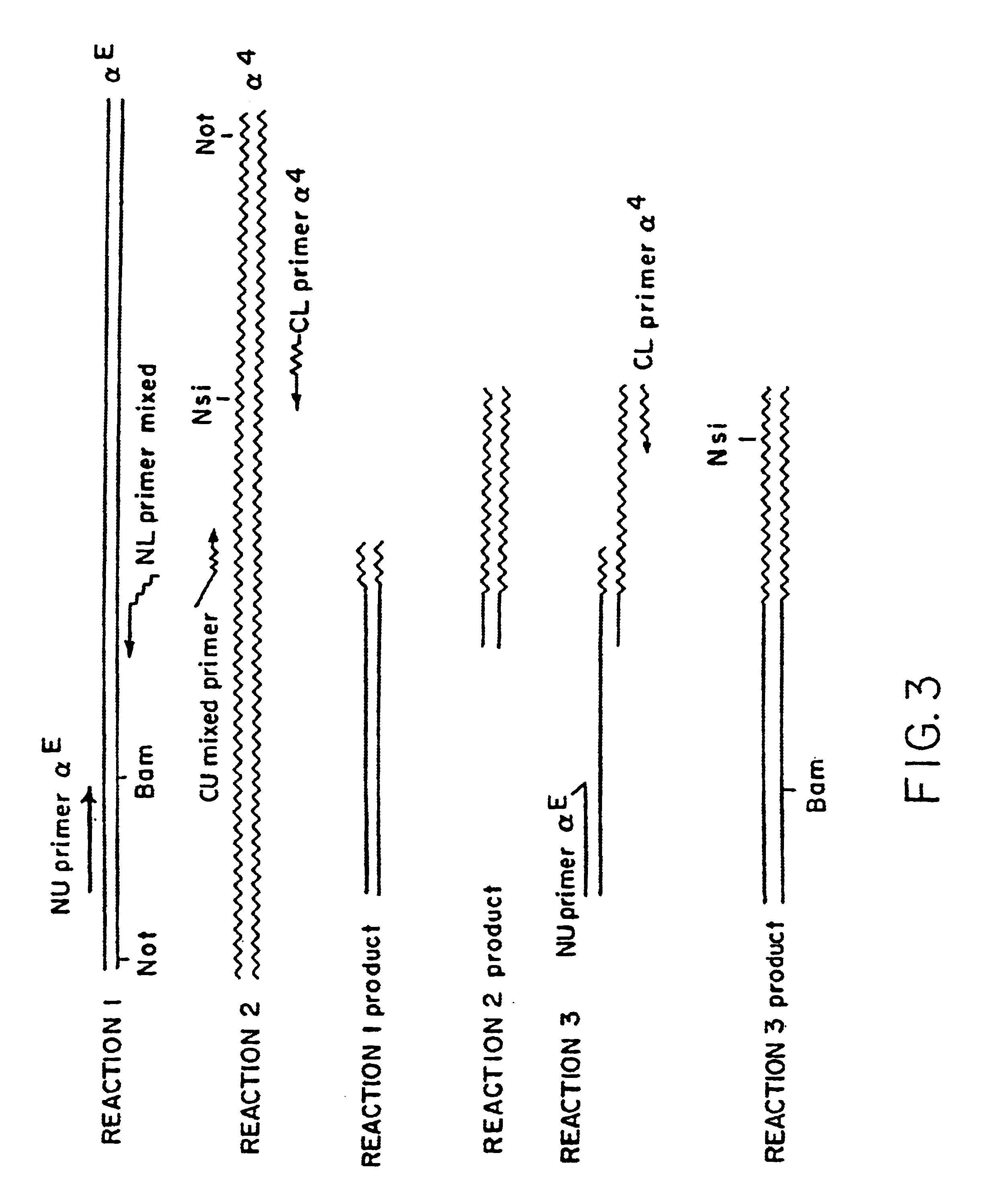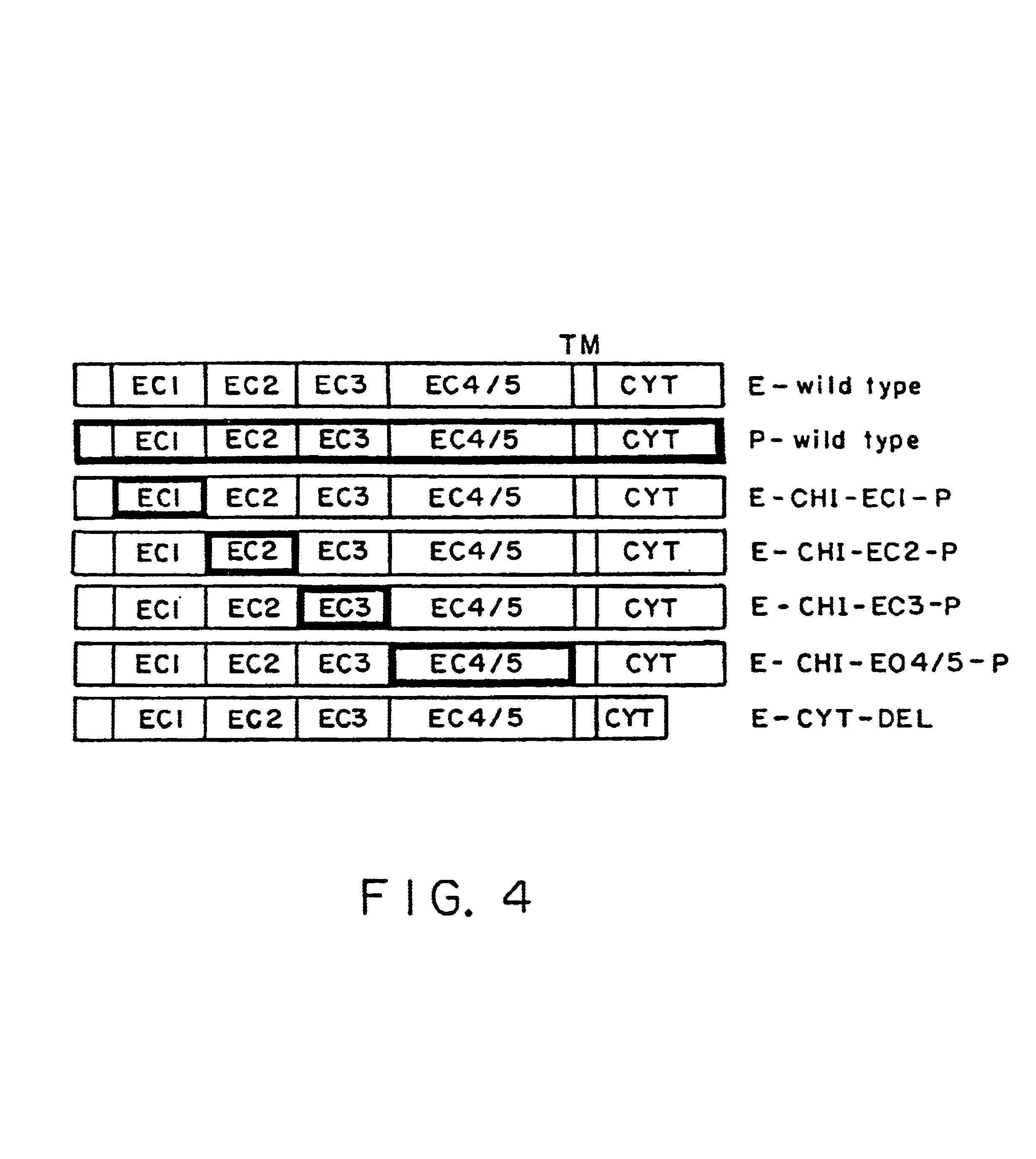Methods and compositions for modulating heterotypic E-cadherin interactions with T lymphocytes
a heterotypic ecadherin and t lymphocyte technology, applied in the field of methods and compositions for modulating heterotypic ecadherin interactions with t lymphocytes, can solve problems such as impeded receptor identification, and achieve the effects of modulating the mucosal immune response of a subject, inhibiting adhesion, and preventing adhesion
- Summary
- Abstract
- Description
- Claims
- Application Information
AI Technical Summary
Benefits of technology
Problems solved by technology
Method used
Image
Examples
examples
[0064]The role of E-cadherin in modulating heterotypic adhesion between E-cadherin expressing cells (e.g., epithelial cells, endothelial cells) and T lymphocytes (e.g., intra-epithelial cells) was accomplished by: (1) developing anti-epithelial cell hybridomas; (2) screening the hybridomas for the ability to block the adhesion of intra-epithelial (but not peripheral blood) lymphocytes to 16E6.A5 epithelial cells in an adhesion assay; (3) subcloning the hybridomas of interest using limiting dilution; (4) using the hybridomas to immunoprecipitate an epithelial cell antigen; (5) biochemically characterizing the immunoprecipitated epithelial cell antigen by, for example, comparing its electrophoretic profile with that obtained by immunoprecipitating epithelial cells with an antibody specific known to be specific for E-cadherin (E4.6 mAb); and (6) indirect immunoperoxidase staining of human small intestine stained with the E4.6 mA. Biochemical analysis demonstrated that the monoclonal an...
example i
Materials and Methods
Abbreviations
[0067]CD, cluster of differentiation; DMEM, Dulbecco's modified eagle medium; EDTA, ethylene diamine tetraacetic acid; ELAM, endothelial leukocyte adhesion molecule; FACS, fluorescence activated cell sorting; FCS, fetal calf serum; FITC, fluorescene isothiocyanate; HUVEC, human umbilical vein endothelial cells; HAT, hypoxanthine-aminopterin-thymidine; ICAM, intercellular adhesion molecule; IFN, interferon; Ig, immunoglobulin; IL, interleukin; LN, lymph node; MHC, major histocompatibility complex; mAb, monoclonal antibody; kDa, kilodaltons; PHA, phytohemagglutinin; PAGE, polyacrylamide gel electrophoresis, SDS, sodium dodecyl sulfate; Mr, relative mass; LAD, leukocyte adhesion deficiency; PBL, peripheral blood lymphocyte; IEL, intestinal intra-epithelial lymphocyte(s); HML-1, human mucosal lymphocyte antigen-1; LFA-1 (αLβ2), lymphocyte associated antigen-1; TCR, T cell receptor; TBS, tris buffered saline; TNF, tumor necrosis factor; VCAM-1, vascular ...
example ii
Regulation of Expression of αEβ7 on Intraepithelial Lymphocytes (IEL) and Peripheral Blood Lymphocytes (PBL)
[0095]FACS analysis revealed that freshly isolated IEL express a profile of integrins that is distinctly different from that observed on peripheral blood T lymphocytes. Freshly isolated IEL expressed high levels of αEβ7 and intermediate levels of α1, integrins which are not expressed on freshly isolated peripheral blood T lymphocytes. In contrast, IEL expressed comparatively lower levels of αLβ2 and α3, α5, and α6. These differences suggest that IEL might use a different combination of adhesive interactions than peripheral blood T lymphocytes. Cultured IEL expressed lower levels of αEβ7 and higher levels of αLβ2 than freshly isolated IEL, more like peripheral blood T lymphocytes. Interestingly, it was possible to shift the integrin profile toward that expressed by freshly isolated IEL through the culture of IEL lines with TGF-β1. These conditions dramatically up-regulated expr...
PUM
 Login to View More
Login to View More Abstract
Description
Claims
Application Information
 Login to View More
Login to View More - R&D
- Intellectual Property
- Life Sciences
- Materials
- Tech Scout
- Unparalleled Data Quality
- Higher Quality Content
- 60% Fewer Hallucinations
Browse by: Latest US Patents, China's latest patents, Technical Efficacy Thesaurus, Application Domain, Technology Topic, Popular Technical Reports.
© 2025 PatSnap. All rights reserved.Legal|Privacy policy|Modern Slavery Act Transparency Statement|Sitemap|About US| Contact US: help@patsnap.com



